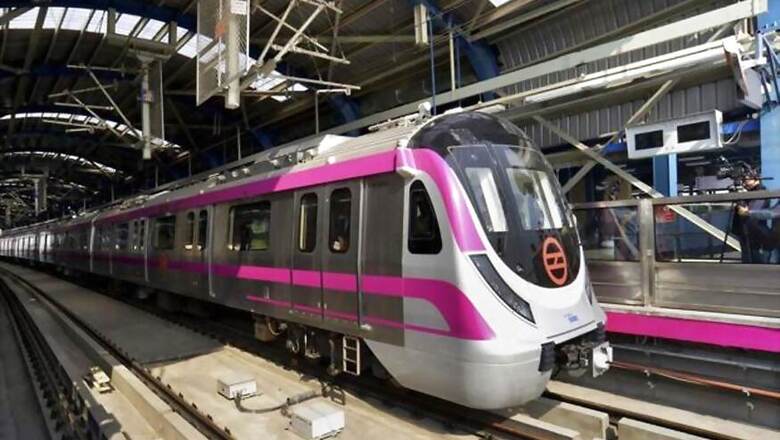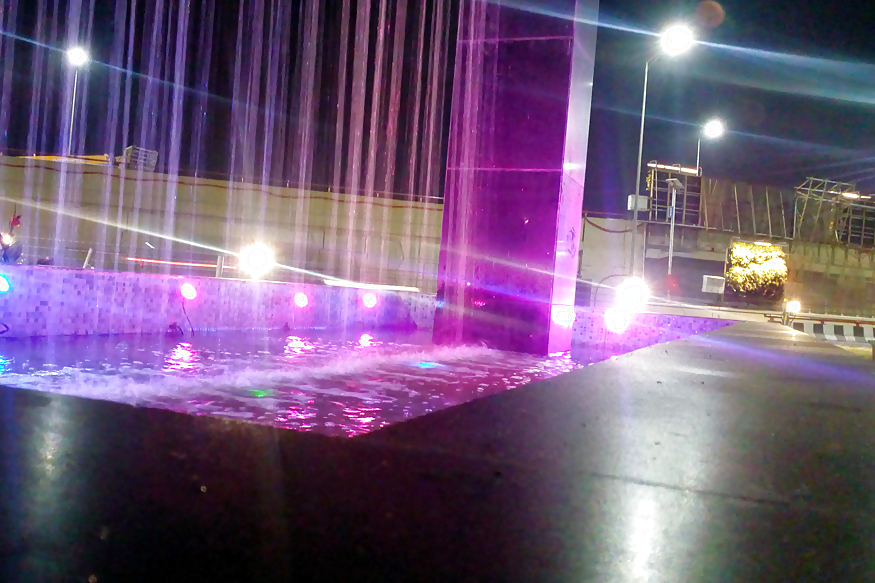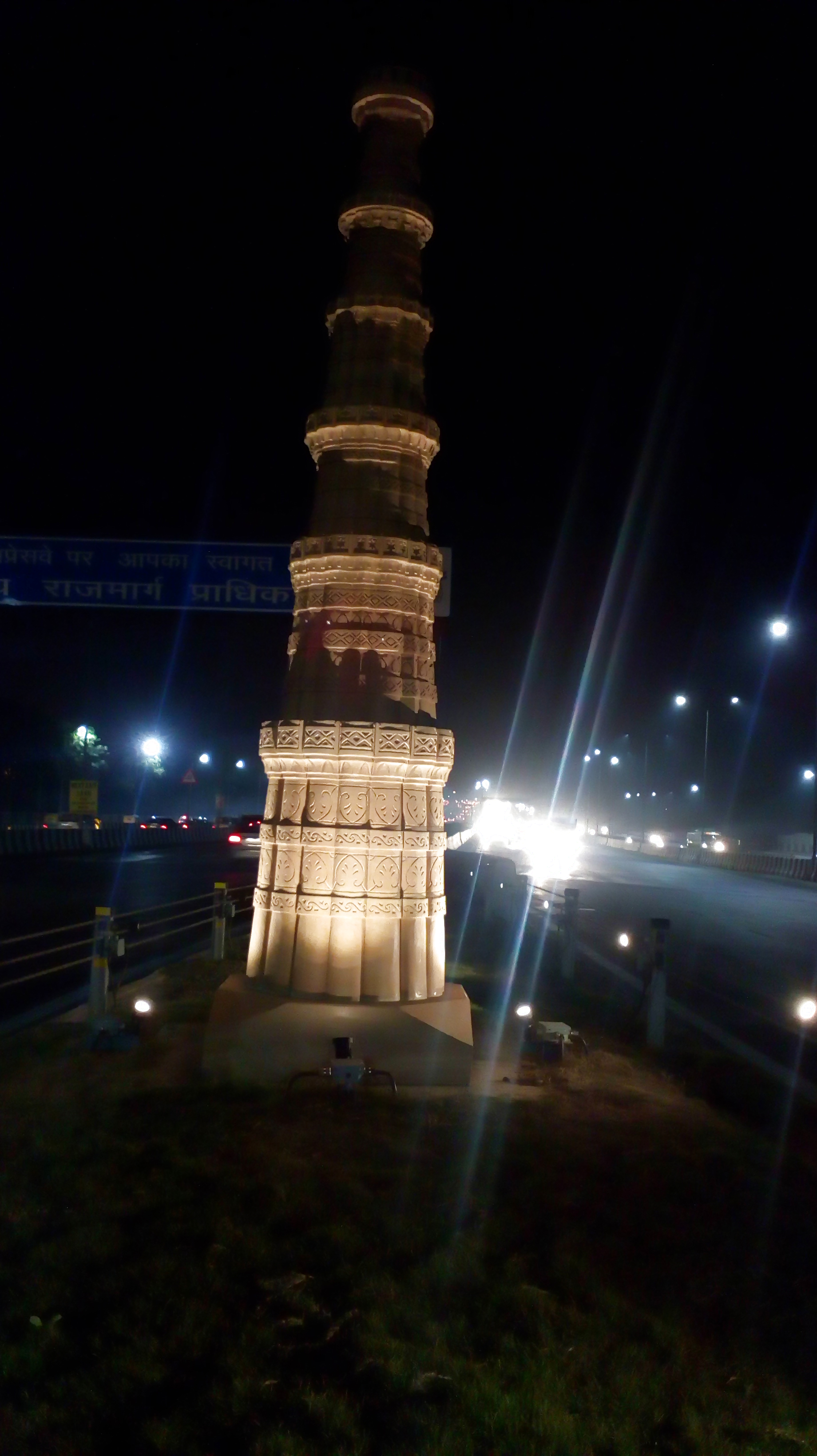
views
New Delhi: Three projects, two of them inaugurated on Sunday, are set to make the lives of more than 5 lakh regular commuters in and around the national capital much easier starting Monday.
PM Narendra Modi inaugurated the Eastern Peripheral Expressway and the first phase of the Delhi-Meerut Expressway on Sunday, which will be followed by the Delhi Metro’s Magenta Line being launched by Delhi CM Arvind Kejriwal, Housing and Urban Affairs minister Hardeep S Puri on Monday.
News18 takes an in-depth look at the three infrastructural achievements which will be a major step towards curbing pollution:
MAGENTA LINE METRO
The 25.6-kilometre second phase of the Magenta Line will run from Kalkaji temple in South Delhi to Janakpuri in West Delhi. There would be three interchangeable stations — Kalkaji Mandir for Violet Line, Hauz Khas for Yellow Line and Janakpuri West for Blue Line.
The new stretch will operate from 6 am on Mondays to Saturdays and at 8 am on Sundays. It will be launched by Delhi CM Arvind Kejriwal, Housing and Urban Affairs minister Hardeep S Puri on Monday at 4:30 pm and will become operational for the public from Tuesday morning.
The line would also make Indira Gandhi Domestic Airport Terminal 1 accessible, making commute to the domestic airport faster and cheaper.
The travelling time between Noida and Gurgaon will be drastically reduced to 50 minutes, which previously took 90 minutes. The waiting time will also be reduced to 90 seconds from the existing two minutes.
Nearly 3.9 lakh passengers are expected to commute through the Magenta Line. Road Expert Kushal Singh pointed out that this diversion will reduce the congestion at Rajiv Chowk.
“It is the ‘knowledge corridor’ of Delhi as it will connect four different universities — Jamia Milia Islamia, JNU, Amity University and IIT," sources in Delhi Metro Rail Corporation (DMRC) said.
The Magenta Line will be Wi-Fi enabled, have USB ports and a backrest for wheelchair-bound commuters. Communication-Based Train Control (CBTC) will allow the locomotive to be driverless.
Automatic Fare Collection (AFC) gates will help control the crowd and facilitate faster entry, exit. On the other hand, automated platform screen doors have been installed and glass separators have been used to divide the station area.
The ‘Knowledge Corridor’ has been artistically designed. At Chirag Delhi station, a butterfly artwork has been installed, with the Palam station boasting of a rooftop installation depicting the blue sky at the passage between exit gates and walls adorning handmade ceramic tiles.
At Janakpuri West Station, the tallest escalators in the country have been installed. It is also the deepest station at 29 metres. Bus stands and public transports will be available within 100 metres of the vicinity.
Similarly, Palam station has a parking space for 66 e-rickshaws where around 6-7 charging points will be provided.
Earlier, inaccessible areas like Sadar Bazaar Cantonment, Mahavir Enclave, Dabri-Palam relied on public buses and autos. However, the Magenta line will reduce traffic volume on the heavily congested Dwarka Flyover.
When asked if about the delay in delivering the project and the effect it had on daily wage labourers, DMRC sources told News18 that they consider contractors as their “partners".
“All extra payments that cropped up due to the delay was handled by the contractors. We have a relationship with them as they have worked with us on previous projects as well. All contingencies were discussed prior to the start of the project," said a DMRC source.
Ride-sharing companies are also jumping into the fray with Ola claiming they would complement the new metro line by providing last-mile connectivity via Ola Share and Ola Bike.
DELHI-MEERUT EXPRESSWAY
India's First Eco-Smart Expressway runs from Nizamuddin Bridge in East Delhi to the Delhi-UP Border, covering a total length of 8.36km, connecting Noida and Ghaziabad.
The Rs 841 crore project halves the Delhi-Meerut travel time and is India's largest control access highway.
“Delhi faces serious congestion issues. The journey to Meerut used to take about four hours and was one of the reasons behind rising pollution in NCR," said Vaibhav Dange, private secretary to Minister of Road Transport and Highways Nitin Gadkari.
Miniatures of heritage monuments, like the Qutab Minar and Ashok Stambh, adorn the expressway illuminated by Style of Art Lighting Systems.
Castilian fountains equipped with horticulture work add to the one-of-a-kind highway. The total length of the project is 82 km, of which the first 27.74 km will be 14-lane, the rest will be a 6-lane expressway.

Castilian fountains on the Delhi-Meerut Expressway. (Image: News18/ Maheema Misra)
The entire route is equipped with modern amenities, including vertical gardens and eight solar panels installed on Yamuna Bridge. The plants are watered using a drip irrigation system.
This is not only a project for motor vehicles, people on foot and cycles also have a broad 2.5m cycle track and 1.5m footpath created for them. Various mom-and-pop stores have also been set up for the convenience of commuters.
The foundation for the Delhi-Meerut Expressway was laid on November 31, 2015. “Phase one was completed in 18 months rather than the estimated 30 months," claimed Dange, adding that the entire project would be completed by March 2019. The project has been split into four segments — Nizamuddin Bridge to UP Border, UP Border to Dasna, Dasna to Hapur and Hapur to Meerut.
“Proper monitoring, focus and insistence on completing it quickly. That is the difference between the current and former government," said Dange, when asked about the before-time delivery.
EASTERN PERIPHERAL EXPRESSWAY (EPE)
The smart and green 135-kilometre expressway starts near Kundli on the Delhi-Haryana border and ends at Haryana’s Palwal district to join Western Expressway, thereby connecting Sonepat, Baghpat, Ghaziabad, Noida and Faridabad.
The 6-lane expressway connects National Highway (NH) 1 and NH 2 from both eastern and western sectors through designated interchanges.
Road Expert, Kushal Singh told News18 that the EPE will bring down the number of trucks travelling through Delhi by 40-50 percent. Furthermore, about 50,000 vehicles would also not have to enter the national capital on a daily basis.
The 10,517 crore project will be equipped with a closed tolling system i.e. pay what you travel method, High Traffic Management System (HTMS), Variable Message Signs (VMS) helping in real-time incident management, CCTVs, Video Incident Detection System (VIDS), Warning Devices, Over Speed Checking System, Weigh in Motion for exit of overloaded vehicles, Pavement Management Systems and Fiber Optic Networks.

A miniature Qutub Minar adorning the Expressway. (Image: News18/ Maheema Misra)
The project, completed in 500 days, has seven interchanges which have beautiful plantations merged with 28 exquisite fountains.
The expressway boasts of being a green corridor, where eight solar power plants with a capacity of 4 MW have been used to light the expressway.
“2.5 lakh avenue plantations have already been established with drip irrigation facility," Dange said.
Talking about farmers whose land was acquired, Dange told News18 that none of them was asked to give up 100% of their land and the compensation given was twice the land value.
Singh told News18 that various measures have been taken to ensure the safety of the citizens, including tie-ups with hospitals, 1039 helpline number and police patrolling.
The concrete expressway was conceptualised in 2006 and was expected to be completed in 910 days. Instead, it was completed in 500 working days despite suspension of work for long periods due to land acquisition issues.













Comments
0 comment